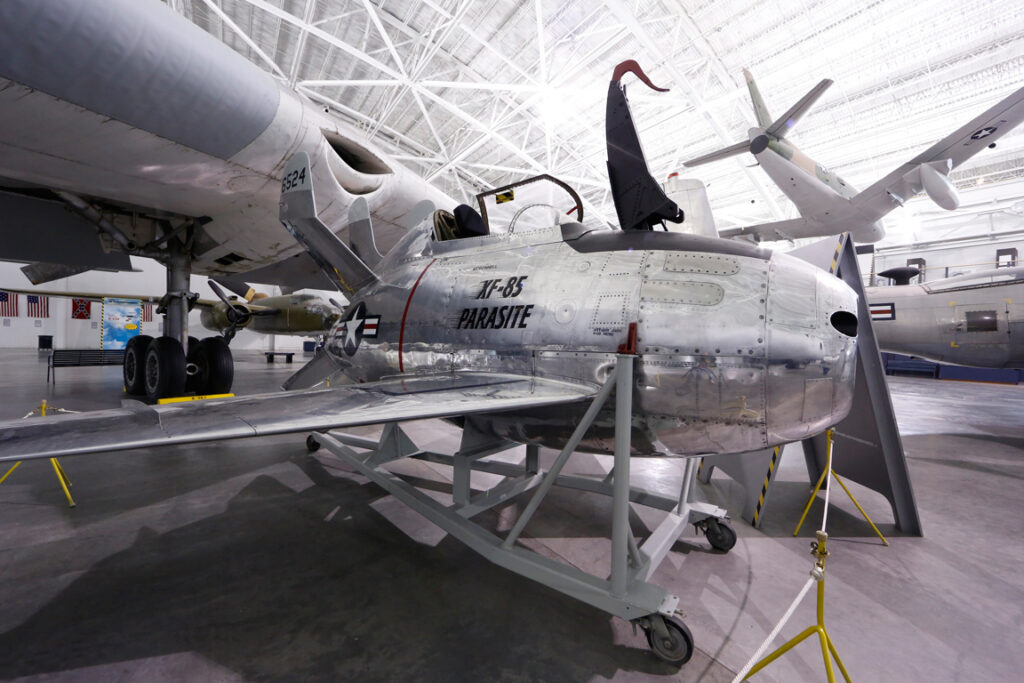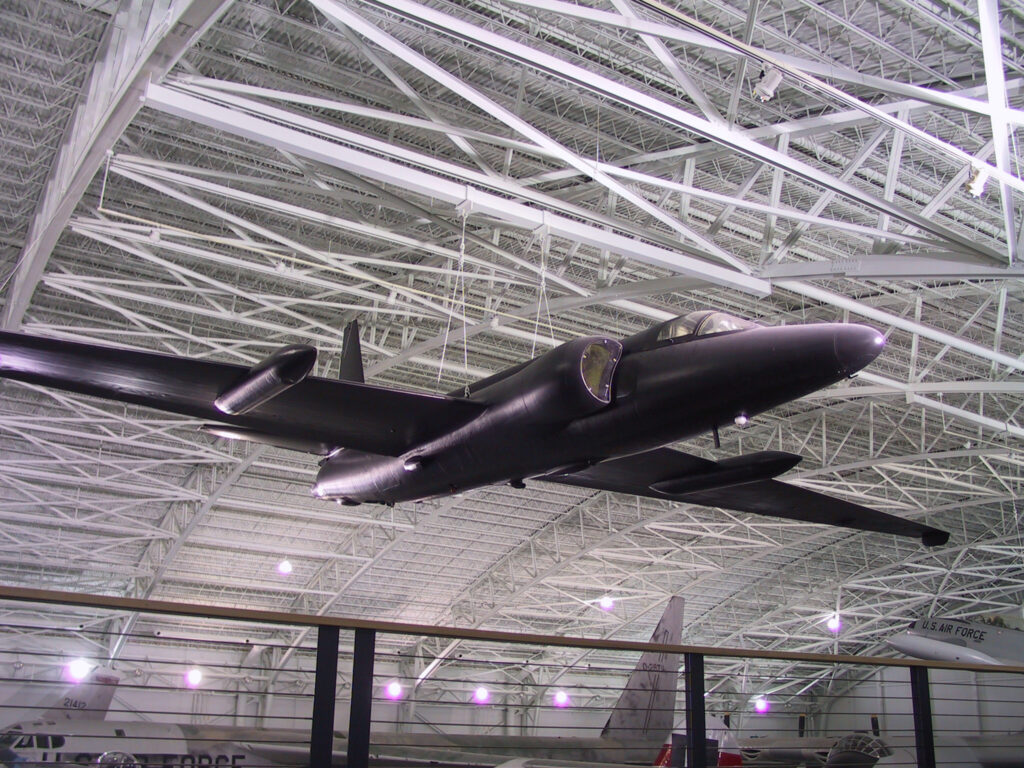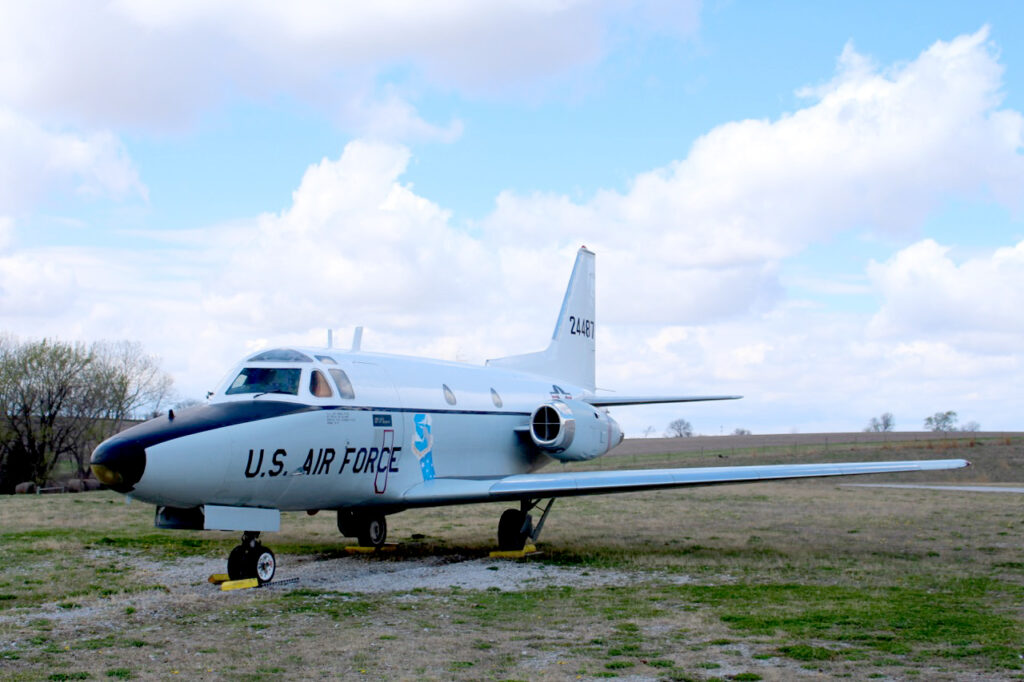Let Your Curiosity Soar
B-47E “Stratojet”
The Boeing B-47 Stratojet was the first swept-wing, jet-propelled bomber produced in large numbers. It was in many respects a revolutionary aircraft. In addition to its high speed and sleek configuration, the B-47 was highly automated. This permitted a reduction in crew from eleven men in a B-50 (of roughly the same gross weight) to only three men and the deletion of all gun armament except for a remotely controlled tail turret. Speed and defensive electronics permitted the elimination of the large number of guns found in earlier bombers.
The U.S. Army Air Force issued its first requirement for a jet bomber late in 1943. Boeing initiated several designs, with a post-war examination of German aircraft data indicating the advantages of the swept-wing configuration. Subsequently, Boeing developed a design with thin, laminar-flow wings swept back 35 degrees, with six turbojet engines mounted in twin and single pods beneath the wings. These were supplemented with provisions for solid-fuel rockets in the rear fuselage for accelerated takeoffs. The main landing gear was fitted in tandem, extending from the fuselage, with smaller wheels on outriggers extending from the wings. Between the main landing gear wells was the single bomb bay, which could accommodate a single gravity nuclear weapon or 10,000 pounds of conventional bombs (up to 22,000 pounds maximum in overload conditions).
Our B-47 was manufactured by Douglas Aircraft in Tulsa, Oklahoma, and delivered to the USAF on May 5, 1955.
Specifications
Aircraft Type: B-47E, S/N 52-1412, Stratojet, Boeing (Douglas)
Mission: Medium bomber
Number Built: The Air Force accepted a total of 2,041 B-47s. Specifically, the B-47 program was comprised of 2 XB-47s, 10 B-47As (mostly used for testing), 397 B-47B s, 1 YB-47C, 1,341 B-47Es, 255 RB-47Es, and 35 RB-47Hs.
Powerplant: Six General Electric J47-GE-25A single-shaft turbojets, 7,200 pounds of thrust each
Weight: Empty 78,200 pounds, loaded 175,000 pounds, maximum takeoff weight 202,000 pounds
Dimensions: Wingspan 116′, length 109’10″, height 27’11″
Performance: Maximum speed 650 MPH at 20,000 feet, cruising speed 495 MPH, service ceiling 42,000 feet
Additional Exhibits

XF-85 “Goblin”
Learn More
U-2C “Dragon Lady”
Learn More